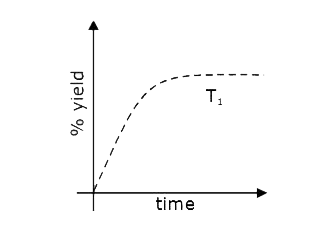Ammonia is produced in accordance with this equation .
N2(g)+3H2(g)→2NH3(g)
In a particular experiment, 0.25mol of NH3 is formed when 0.5 mol of N2 is reacted with 0.5 mol of H2. What is the percent yield?
0.75
0.5
0.33
0.25
The correct Answer is:A
Step by step video, text & image solution for Ammonia is produced in accordance with this equation . N_(2)(g) + 3H_(2)(g) rightarrow 2NH_(3)(g) In a particular experiment, 0.25mol of NH_(3) is formed when 0.5 mol of N_(2) is reacted with 0.5 mol of H_(2). What is the percent yield? by Chemistry experts to help you in doubts & scoring excellent marks in Class 11 exams.
Updated on:21/07/2023Topper's Solved these Questions
- MOLE CONCEPT, STOICHIOMETRY & CONCENTRATION TERMSBOOK - GRB PUBLICATIONCHAPTER - MOLE CONCEPT, STOICHIOMETRY & CONCENTRATION TERMSEXERCISE - Sequential and Parallel Reactions
17 Videos
- MOLE CONCEPT, STOICHIOMETRY & CONCENTRATION TERMSBOOK - GRB PUBLICATIONCHAPTER - MOLE CONCEPT, STOICHIOMETRY & CONCENTRATION TERMSEXERCISE - Empirical and molecular formula
52 Videos
- MOLE CONCEPT, STOICHIOMETRY & CONCENTRATION TERMSBOOK - GRB PUBLICATIONCHAPTER - MOLE CONCEPT, STOICHIOMETRY & CONCENTRATION TERMSEXERCISE - Stoichiometry
88 Videos
- ISOMERISMBOOK - GRB PUBLICATIONCHAPTER - ISOMERISMEXERCISE - SUBJECTIVE TYPE
67 Videos
- NOMENCLATURE AND CLASSIFICATIONBOOK - GRB PUBLICATIONCHAPTER - NOMENCLATURE AND CLASSIFICATIONEXERCISE - Subjective Type
24 Videos
Similar Questions
Knowledge Check
According to the equation
N2O3(g)+6H2(g)⇒2NH3(g)+3H2O(g)
how many moles of NH3(g) could be formed from the reaction of 0.22 mol of N2O3(g) with 0.87 mol of H2(g)?A0.29molB0.44molC0.73molD1.1molThe % yield of ammonia as a function of time in the reaction N2(g)+3H2(g)⇔2NH3(g),(g)ΔH<0 at (P,T1) is given below
 A
A B
B C
C D
D
20.0 kg of N2(g) and 3.0 kg of H2(g) are mixed to produce NH3(g). The amount of NH3(g) formed is
A17 kgB34 kgC20 kgD3 kg
50.0kg of N2(g) and 10g of H2(g) are mixed to produce NH3(g). Calculate the NH3(g) formed. Identify the limiting reagent.
View SolutionFor the reaction N2(g)+3H2(g)→2NH3(g),ΔH=−93.6KJmol−1 the formation of NH3 is expected to increase at :
View Solution20.0 kg of N2(g) and 3.0 kg of H2(g) are mixed to produce NH3(g). The amount of NH3(g) formed is :-
View Solution20.0 kg of N2(g) and 3.0 kg of H2(g) are mixed to produce NH3(g). The amount of NH3(g) formed is
View SolutionThe commercial poduction of ammonia is represented by the equation,
N2(g)+3H2(g)→2NH3(g).
If the rate of disappearance of H2(g) is 1.2×10−3 mol/min, what is the rate of appearance of NH3(g)?
View Solution
